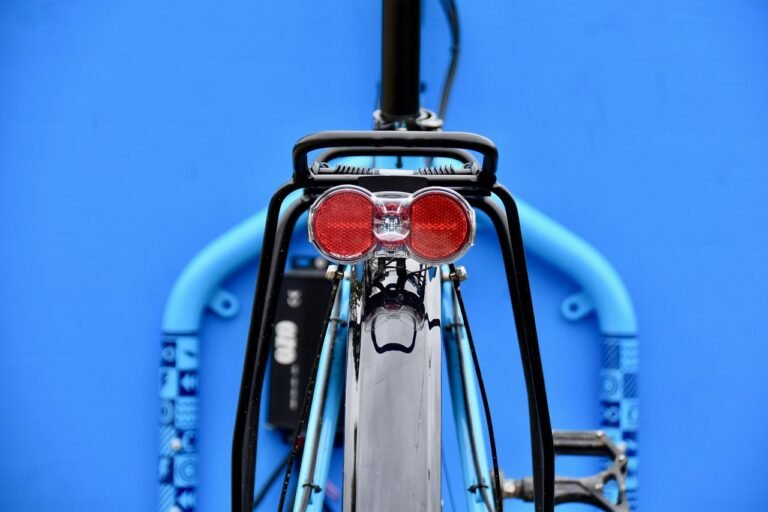How to Properly Clean Your Mountain Bike After a Muddy Ride
I’ve been giving some thought as to How to Properly Clean Your Mountain Bike After a Muddy Ride. Nothing quite compares to the thrill of tackling a challenging, muddy mountain bike trail.
However, the aftermath of that exhilarating ride can be a bit of a headache – unless you know the proper techniques for cleaning your bike. In this comprehensive guide, I’ll walk you through the essential steps to get your mountain bike looking and performing its best, even after the muddiest of adventures.
Gather the Right Bike Cleaning Supplies
As an avid cyclist, I’ve learned that having the right cleaning products and tools on hand is essential for keeping my bike in tip-top shape. It might seem like overkill, but trust me, using bike-specific supplies is a game-changer.
First and foremost, you’ll want a good quality bike degreaser.
A good solvent is a worktop essential, and WD-40’s Bike Degreaser does a great job at a sensible price.
Pros: Very effective, great value
Cons: Might be a bit aggressive for some uses
Regular household degreasers can be way too harsh and end up stripping the finish on your components. With the exception of Dawn dish detergent. Bike-specific degreasers are designed to cut through all that built-up grease and grime without damaging the underlying metal or paint.

In addition to the degreaser, you’ll also want a gentle, pH-balanced bike cleaner for the frame and other painted surfaces. This will help maintain that fresh-from-the-shop look without any unwanted scratches or residue.
Brushes, Sponges, and Rags, Oh My!
Beyond the actual cleaning products, having the right brushes, sponges, and rags is key. I like to keep a variety on hand – a big brush for the frame, a small one for the spokes, nooks and crannies, and a stiff-bristled one for scrubbing the chain. And trust me, having a stack of clean, dry rags is essential. You don’t want to be wiping down your shiny new components with a dirty, oily rag.
Lube Up and Protect
Once you’ve got your bike all clean, you’ll want to reapply a quality bike-specific lubricant to the chain, derailleur, and other moving parts. This helps keep everything running smoothly and prevents premature wear. And for the frame and other painted surfaces, a bike polish or protective sealant can help maintain that just-cleaned look.
I know what you might be thinking – that’s a lot of specialized products! And you’re not wrong. Bike maintenance can definitely get a little gear-intensive. But trust me, it’s worth the investment. Those bike-specific cleaners and tools are designed to be gentle yet effective, which means you can keep your ride looking and performing its best for years to come.
Plus, there’s just something about seeing your bike shining after it’s been cleaned. It’s like a zen moment where you can just focus on the task at hand and really appreciate all the engineering that goes into these machines. And let’s be real, a clean bike just rides smoother and handles better. It’s an investment in your cycling experience. Try not to do what this guy is doing!

Pre-Rinse and Degrease to Clean Your Mountain Bike
- Use a low-pressure hose to remove large debris
- Apply degreaser to the chain, cassette, and other moving parts
- Allow the degreaser to sit for the recommended time
Before you even think about breaking out the cleaning supplies, it’s important to start with a good pre-rinse. Use a low-pressure hose to gently spray down your bike and remove any large debris or mud that’s accumulated. Try to avoid using a pressure washer. This helps prevent you from just smearing that gunk around when you start scrubbing.
Next up, it’s time to tackle the degreasing process. This is honestly one of the most important steps, because you want to make sure you get all that built-up grease and grime off your bike’s moving parts. I always make sure to hit the chain, cassette, derailleur, and any other components that need some serious cleaning first.
When it comes to choosing a degreaser, as I mentioned before, you’ll want to stick to a product that’s specifically formulated for bicycles. Regular household degreasers can be way too harsh and end up damaging your components. Bike-specific degreasers are designed to cut through all that crud without stripping away the underlying finish.
Once you’ve applied the degreaser, let it sit for the recommended amount of time – usually around 5-10 minutes. This gives it a chance to really soak in and loosen up all that stubborn gunk. And be sure to get into all the nooks and crannies – you really want to make sure you’re getting every last speck of dirt and grease.
After the degreaser has had time to work its magic, it’s time to start scrubbing. I like to use a stiff-bristled brush for this step, as it helps agitate the dirt and really get everything clean. Start with the chain and cassette, then move on to the derailleurs, brakes, and any other moving parts.
Once you’ve given everything a good scrubbing, it’s time to rinse it all off. Again, use a low-pressure hose to gently wash away all the dissolved dirt and grime. You don’t want to be blasting it with high pressure, as that can force water into places you don’t want it.
At this point, your bike should be looking a lot better – but we’re not done yet! Next up, it’s time to move on to the actual cleaning and polishing process.

Scrub and Clean
- Use soft-bristle brushes to gently scrub the frame, wheels, and suspension
- Pay close attention to hard-to-reach areas
- Rinse thoroughly to remove all dirt and grime
With the degreasing step out of the way, it’s time to tackle the full scrub and clean of your bike. This is where you can really make that thing shine!
I like to start with some soft-bristle brushes – one for the frame, one for the wheels, and a smaller one for getting into all the nooks and crannies. The key here is to be gentle but thorough. You really don’t want to be too aggressive and risk scratching up your beautiful paint job. Certainly, be careful.
Pay extra close attention to any areas that tend to accumulate a lot of dirt and grime, like the chainstays, fork lowers, and derailleur pulleys. Use the smaller brushes to really get in there and lift out all that built-up muck. Getting these hard-to-reach spots sparkling clean can make a huge difference in how your bike looks and performs.
Once you’ve given everything a good scrubbing, it’s time to rinse it all off. Again, use a low-pressure hose to gently wash away any remaining dirt and grime. You want to make sure you get it all – no left behind residue allowed! I like to go over the whole bike a few times, starting from the top and working my way down, to ensure I don’t miss a single spot.
By the time you’re done with this step, your bike should be looking better than the day you bought it. All the time and elbow grease you put into scrubbing and rinsing will really pay off when you see that gleaming, fresh-as-new finish.
Of course, we’re still not quite done with the cleaning process. Next up, it’s time to move on to the final polishing and protecting steps. But for now, just bask in the glow of a super clean, sparkling bike. Isn’t it amazing what a little elbow grease can do? Love it!

Lubricate and Protect
- Apply bike-specific lubricants to the chain, pivots, and other moving parts
- Wipe down the frame with a clean, dry rag to protect the finish
Alright, we’re almost done with the cleaning process! The final step is all about lubrication and protection.
First up, it’s time to reapply some fresh lubricant to your bike’s moving parts. I always make sure to hit the chain, derailleur pivots, and any other components that need a bit of TLC. When it comes to bike lubes, you’ll again want to stick to products that are specifically formulated for cycling use. Regular household oils and greases just won’t cut it.
The key is to apply the lube sparingly, but make sure you get it evenly distributed. You don’t need to drown it – just a light, even coat will do the trick. And don’t forget to wipe off any excess, as that can actually attract more dirt and grime down the road.
With the lubrication taken care of, the final step is to give the entire frame a good wipe-down with a clean, dry rag. This helps remove any last bits of residue and protects the paint or finish from future wear and tear. I like to use a microfiber cloth for this, as it’s super gentle and won’t leave behind any streaks or lint.
Once you’ve given the whole bike a good once-over with the rag, you’re officially done! Step back and admire your sparkling, freshly-maintained bike. Doesn’t it look good as new? Why not take a selfie with it you earned it!
Of course, this isn’t a one-and-done kind of process. Regular bike cleaning and maintenance is key to keeping your trusty two-wheeler running smoothly for years to come. But trust me, the time and effort you put into it is so worth it. There’s nothing quite like the feeling of hopping on a bike that’s been lovingly cared for. It also helps form a bonding relationship.

Final Inspection and Storage
- Check for any remaining dirt or debris
- Ensure all components are functioning properly (brakes especially)
- Store your bike in a clean, dry, and protected environment
Alright, we’ve made it to the final step in the bike cleaning process! Before you call it a day, it’s important to do one last inspection to make sure you haven’t missed anything.
Start by giving the entire bike a thorough once-over, checking for any lingering dirt, debris, or grime that you may have missed. Pay close attention to those hard-to-reach areas you scrubbed earlier – sometimes little bits of gunk can hide in the nooks and crannies. Use a clean, dry rag to gently wipe down the frame, wheels, and components one more time.
Next, take a moment to ensure that all of your bike’s components are functioning properly. Give the brakes a test squeeze, shift through the gears, and spin the wheels to make sure everything is moving smoothly and as it should. If you notice any issues, like stiff pivots or rubbing brakes, now is the time to address them.
Finally, it’s time to think about storage. You’ll want to keep your freshly-cleaned bike in a clean, dry, and protected environment when it’s not in use. Avoid damp, dusty garages or basements if possible, as those conditions can quickly undo all your hard work.
Instead, opt for a dedicated bike storage area, whether that’s a spare room, a climate-controlled shed, or even just a covered porch.
When storing your bike, be sure to keep it elevated off the ground, either by hanging it from the wall or using a sturdy bike stand. This helps prevent damage to the tires and components. You may also want to consider covering it with a breathable bike cover to keep dust and debris at bay.

And there you have it – the complete cycle of bike cleaning, from start to finish! By following these steps and using the right products and techniques, you can keep your trusty two-wheeler looking and performing its absolute best, ride after ride. Happy riding!
Final Thoughts
By following these simple steps, you can ensure that your mountain bike stays in top condition, even after the most challenging, muddy rides. Taking the time to properly clean and maintain your bike will not only extend its lifespan but also improve its performance and keep you riding at your best.
Remember, regular bike maintenance is key to enjoying a long and fulfilling relationship with your trusted two-wheeled companion. So, the next time you return from the trails, don’t neglect the importance of a thorough cleaning – your bike will thank you for it!
Engage, Endure and Enjoy!
Find More Resources on Bicycles
- Smart Bike Trainers: 2024 Best Picks with Features and Benefits
- Mountain Biking for Beginners: Essential Guide to Hit the Trails in 2024
- 3 Best Mountain Bikes of 2024: Complete Buyer’s Guide & Reviews
- How Do You Adjust Bike Brakes? A Step-by-Step Guide for 2024
- Essential Mountain Bike Gear: A Complete Guide for 2024







